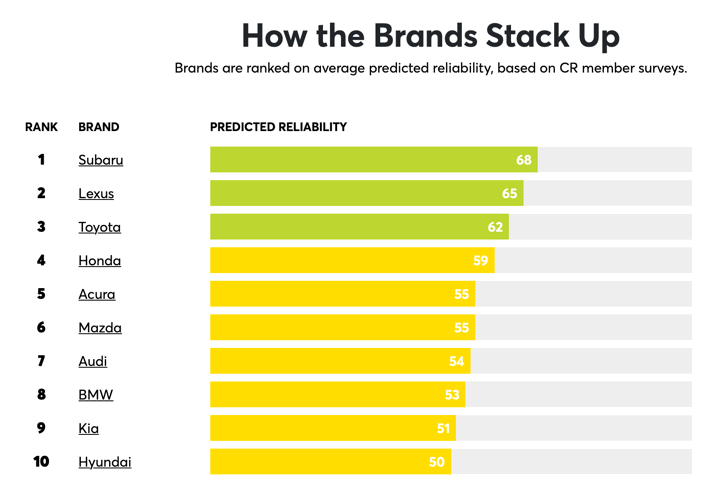
Consumer Reports has released their annual “Best Cars” issue. Their definition of “best” involves a combination of their self-conducted road tests, safety ratings, owner satisfaction surveys, and owner reliability surveys. However, I’m mostly just concerned about their reliability ratings. I like to track the ones moving up and the ones moving down. I do believe it says something broad about the current state of each manufacturer.
Subaru uses a lot of the same parts across all of its vehicles, which means fewer new designs and thus higher reliability. They are also now a more mature company, after a period of very fast growth. Their all-wheel drive has basically stayed the same for years and years, and it’s on every vehicle so they have it down. Toyota/Lexus has a long history of opting for small, incremental changes rather than complete redesigns. This makes them more boring, but boring tends to be reliable.
Still, Consumer Reports recommends that you shop by specific vehicle model and not just by brand make. In general, new models have more problems than those that are 2-3 years old.
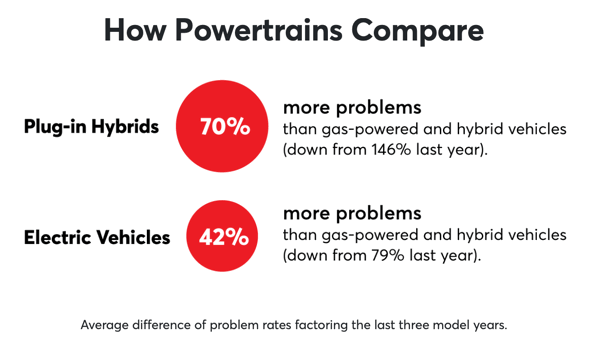
Hybrids are surprisingly now nearly as reliable as traditional ICE cars despite their add complexity, while plug-in hybrids have 70% more problems overall than ICE vehicles (down from 146% more last year). Pure electrics have 42% more problems than ICE vehicles (down from 79% more last year). My assumption is that this is again because hybrids have been around longer and the engineers have had a chance to solve the problems that arose. I’m still quite happy with my old Toyota minivan, although I have been watching reviews of the new Volkswagen ID Buzz. Maybe after a few more years…
 Consumer Reports has released updated results from their 2021 Car Owner Survey in the articles
Consumer Reports has released updated results from their 2021 Car Owner Survey in the articles 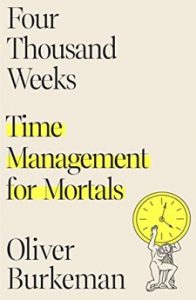
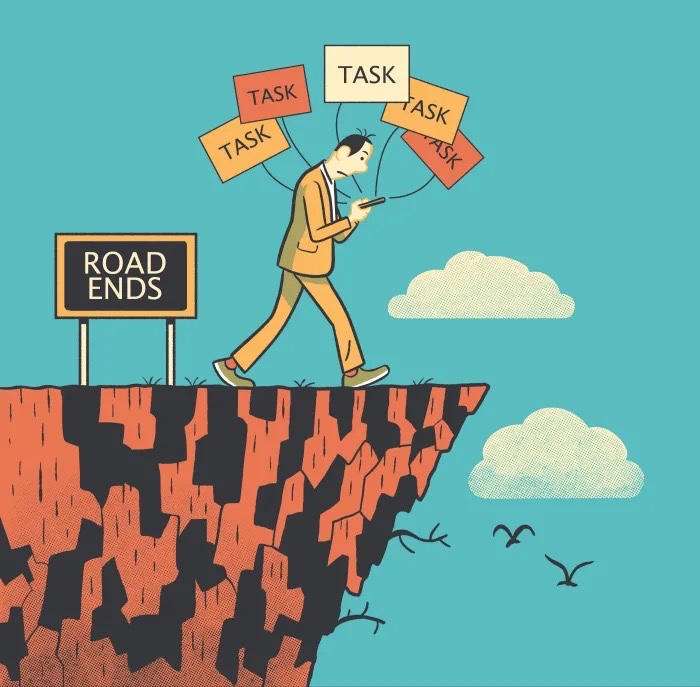
 Did you know there was an iPhone app called
Did you know there was an iPhone app called 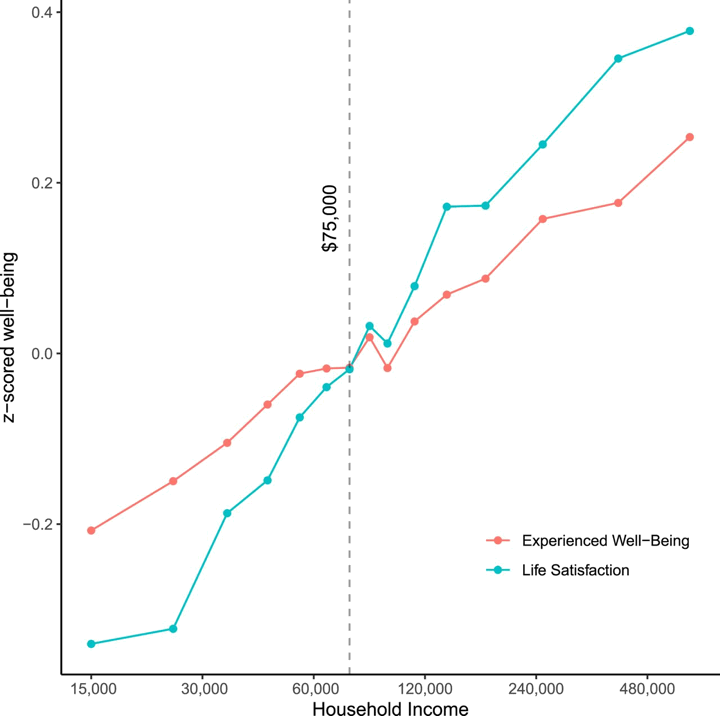
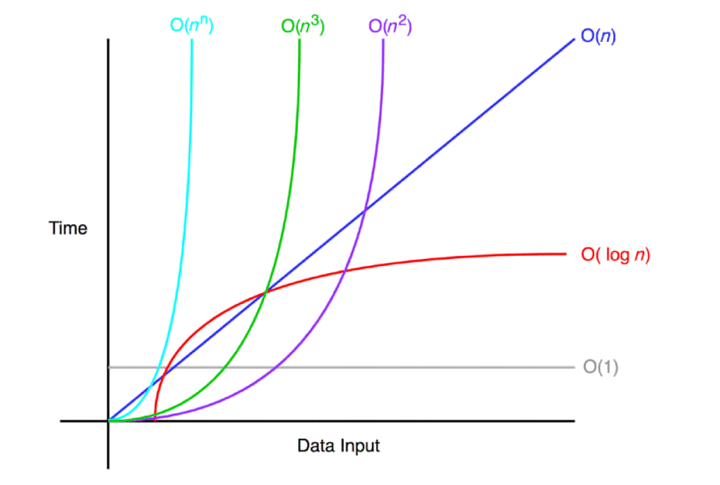
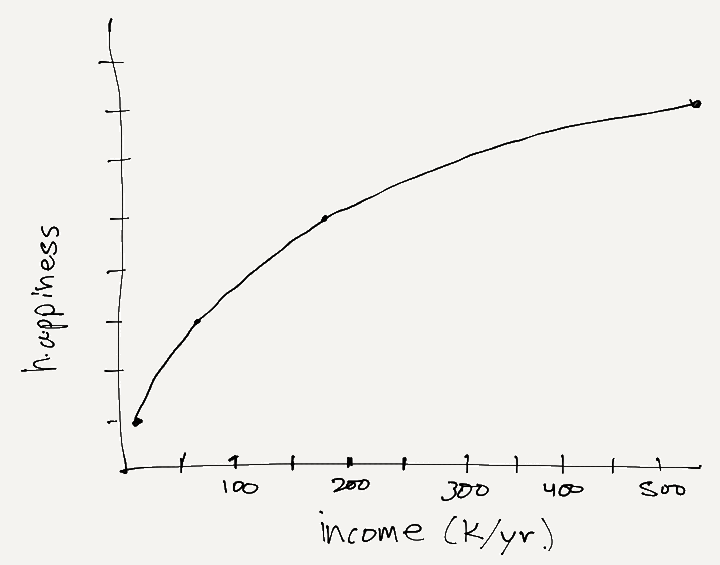
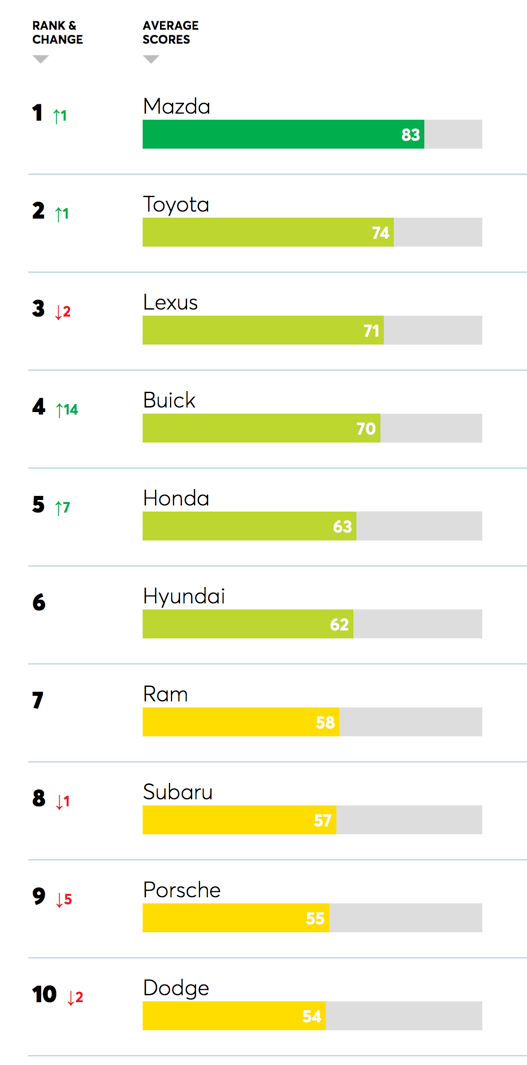
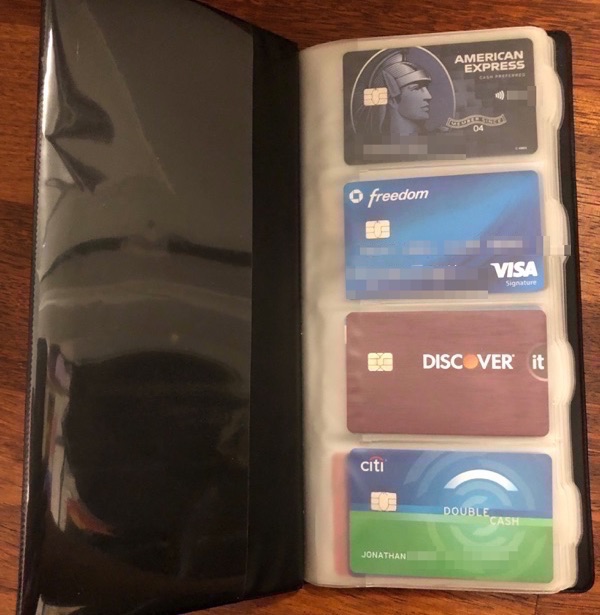
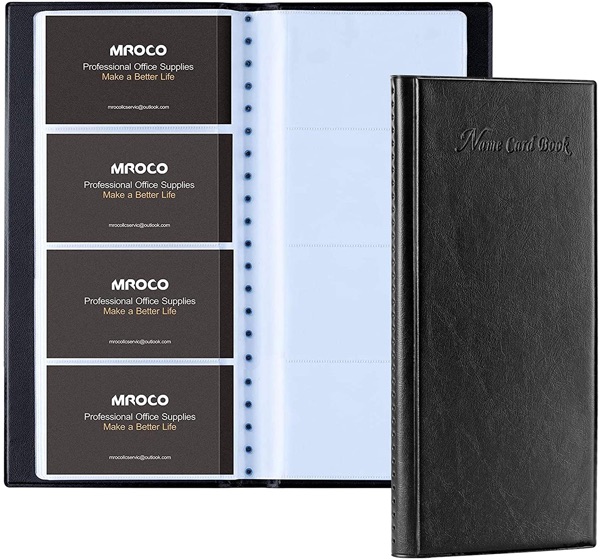
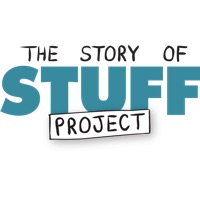

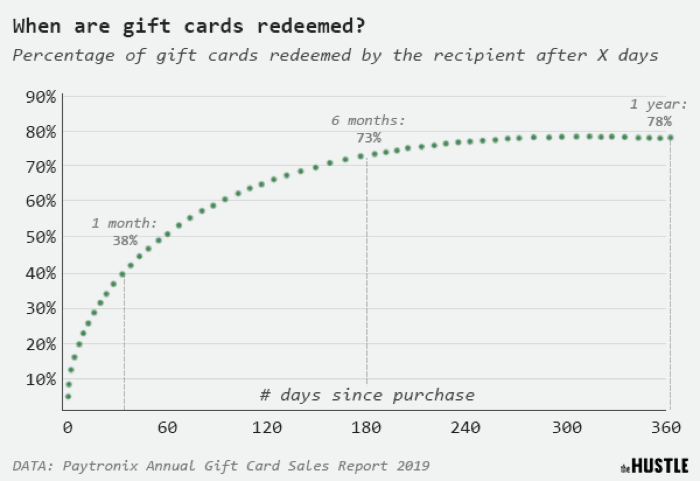
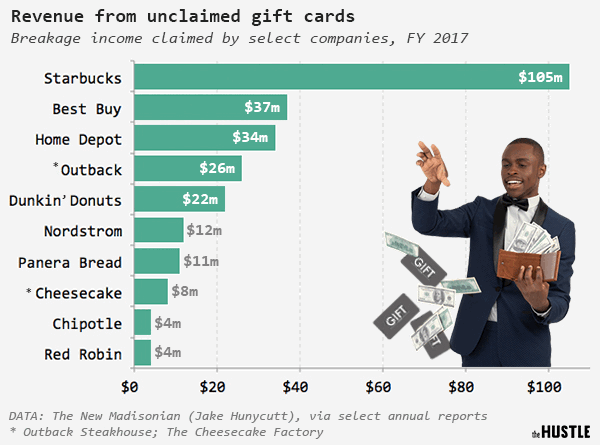
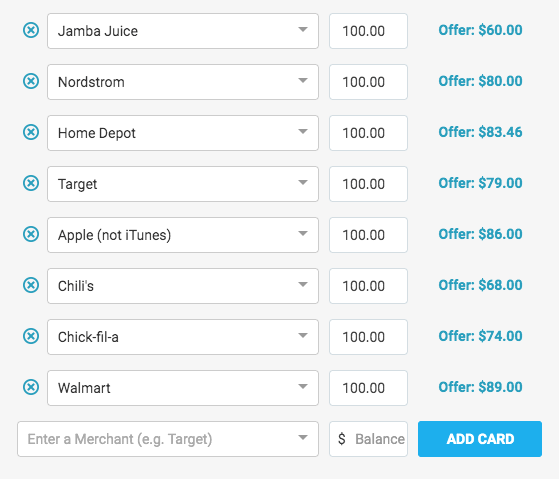
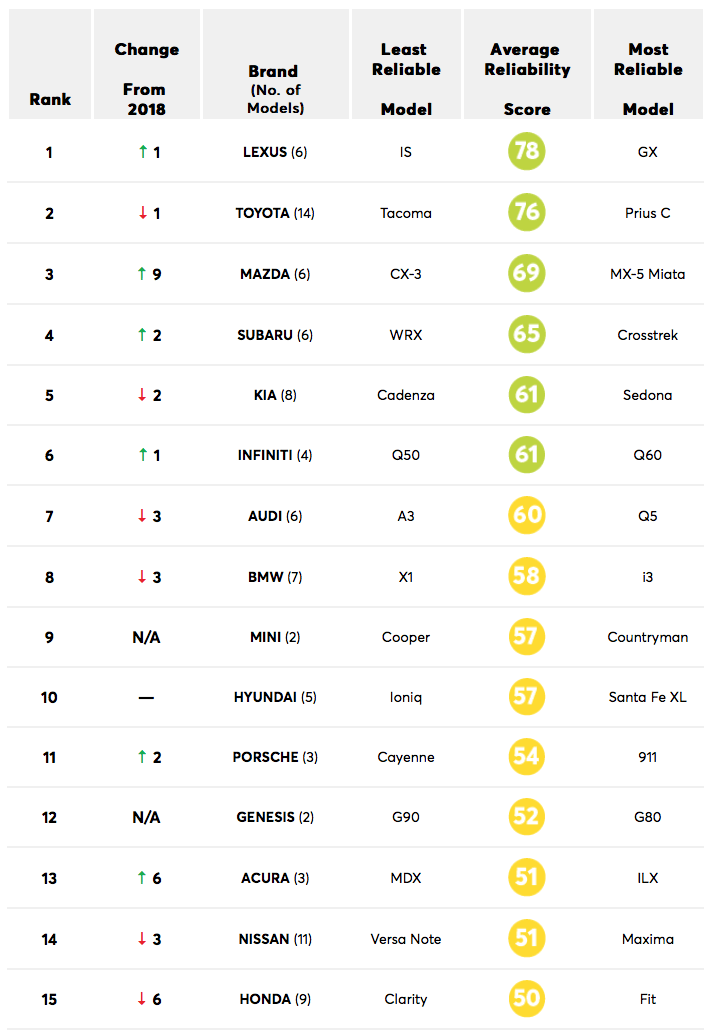

 It’s kind of sad when you hear the term “Black Friday Week” more often than Thanksgiving. I would like to interrupt the flow of deals to briefly connect personal finance and Thanksgiving in a different way. Seth Godin has put together something called the
It’s kind of sad when you hear the term “Black Friday Week” more often than Thanksgiving. I would like to interrupt the flow of deals to briefly connect personal finance and Thanksgiving in a different way. Seth Godin has put together something called the 
 The Best Credit Card Bonus Offers – 2025
The Best Credit Card Bonus Offers – 2025 Big List of Free Stocks from Brokerage Apps
Big List of Free Stocks from Brokerage Apps Best Interest Rates on Cash - 2025
Best Interest Rates on Cash - 2025 Free Credit Scores x 3 + Free Credit Monitoring
Free Credit Scores x 3 + Free Credit Monitoring Best No Fee 0% APR Balance Transfer Offers
Best No Fee 0% APR Balance Transfer Offers Little-Known Cellular Data Plans That Can Save Big Money
Little-Known Cellular Data Plans That Can Save Big Money How To Haggle Your Cable or Direct TV Bill
How To Haggle Your Cable or Direct TV Bill Big List of Free Consumer Data Reports (Credit, Rent, Work)
Big List of Free Consumer Data Reports (Credit, Rent, Work)